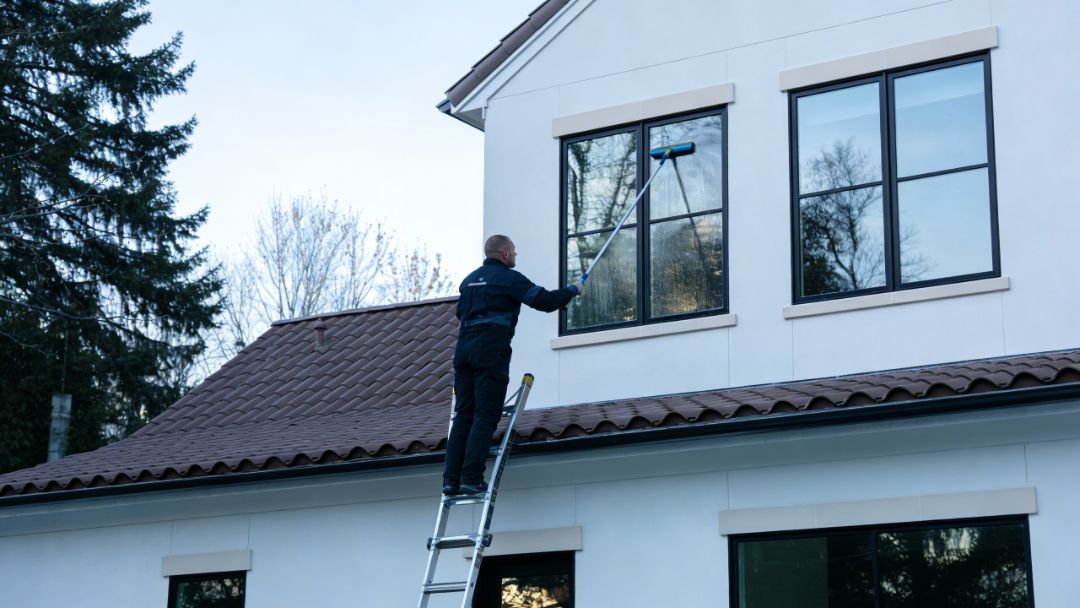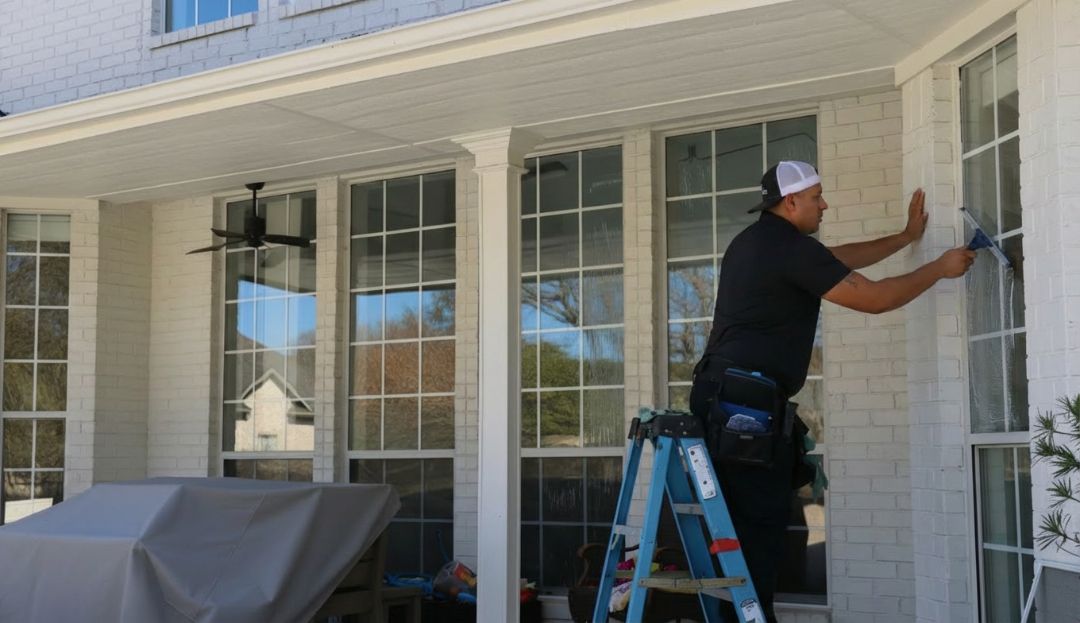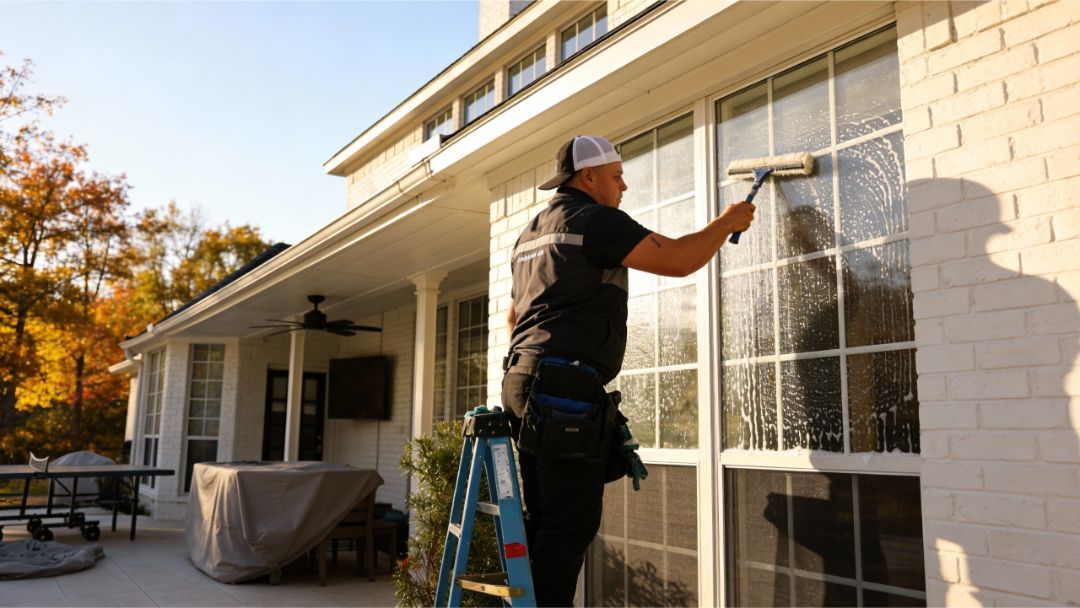What Should You NOT Use to Clean Windows?
TL;DR;
Avoid using harsh chemicals like ammonia and bleach, abrasive tools such as steel wool, and outdated materials like paper towels to clean windows. These can damage glass, leave streaks, or deteriorate window seals. Instead, use pH-neutral solutions, microfiber cloths, and proven techniques for a clear, damage-free shine.
Why the Wrong Products Can Damage Your Windows
Using the wrong cleaning products can lead to long-term damage that isn’t always visible at first. From glass scratches to chemical corrosion, improper window cleaning can lower energy efficiency, compromise aesthetics, and even void manufacturer warranties.
At Amazing Finish Windows, we’ve seen firsthand how avoidable mistakes cost homeowners and businesses more than they realize. Let’s explore the science behind the damage.
Chemical Damage to Window Glass and Seals
Some cleaning agents contain chemicals that react negatively with window glass or seals:
- Ammonia and acid-based cleaners can cause chemical etching.
- pH imbalance in harsh cleaners may degrade rubber seals and glazing.
- Oxidation from strong chemicals can leave lasting haze or cloudiness.
Double-glazed windows are particularly vulnerable. Their airtight seals can weaken, allowing moisture to seep in—leading to foggy panes and expensive repairs.
Physical Abrasion from Inappropriate Tools
Scratches on glass may not always be obvious—but over time, they scatter light and make windows look dull. Here’s what causes it:
- Steel wool and scrubbing pads can leave micro-scratches.
- Abrasive sponges damage the glass surface, even on “tough” jobs.
If you've ever wondered what happens if you use steel wool on glass, the answer is permanent scarring and reduced clarity.
The Top 7 Products and Tools You Should Never Use
Knowing what not to clean windows with can save you time, money, and effort. Below are the most common offenders we see at Amazing Finish Windows.
Ammonia-Based Glass Cleaners
- They may seem effective, but ammonia
damages tinted windows and can
break down window films.
- In enclosed spaces, ammonia fumes are hazardous to your health.
- Double-pane windows are especially sensitive, as ammonia can react with seals and coatings.
Vinegar (in the Wrong Contexts)
- Vinegar is acidic, and while it works in diluted forms, undiluted vinegar:
- Can
etch stone sills and leave marks on treated frames.
- Degrades window tints if sprayed directly on the film.
- Is often mislabeled as a “natural solution” but needs careful handling.
Bleach and Strong Chemicals
- Bleach corrodes metal parts, such as window latches and hinges.
- It releases harmful fumes in enclosed areas.
- It’s
unsafe for colored or coated window trims and can degrade protective layers.
Abrasive Scrubbers and Steel Wool
- Causes visible and invisible scratches.
- Even light pressure can scrape off protective coatings.
- Reduces transparency and increases future grime buildup.
Paper Towels and Newspapers
- Lint residue clings to freshly cleaned windows.
- Ink from newspapers can smear and stain white frames.
- Both are highly
absorbent, which leads to streaks when moisture evaporates unevenly.
Hard Water and Mineral-Rich Tap Water
- Water with high
calcium and magnesium leaves mineral deposits.
- Leads to
water spots,
cloudy films, and long-term staining.
- Especially problematic if you let water air dry in sunlight.
While many assume that environmental factors like acid rain are the main culprit behind window discoloration, the truth is more nuanced. In fact, understanding the difference between
hard water vs. acid rain is key to identifying what's truly causing the damage. Hard water leaves behind visible mineral buildup, while acid rain can gradually erode protective coatings and seals, both require different prevention strategies.
Cleaning in Direct Sunlight
- The heat causes solutions to
evaporate too fast, leaving streaks.
- Glass may expand slightly in the sun, distorting pressure points during cleaning.
- Cleaning midday or during heatwaves amplifies these issues.
Better Alternatives: What You SHOULD Use Instead
At Amazing Finish Windows, we’ve developed methods that are safe, effective, and easy for homeowners and pros alike. Here's what works.
Best Window Cleaning Solutions (DIY and Store-Bought)
Use products that are pH-neutral and designed for glass surfaces. Some reliable options include trusted Homemade Window Cleaning Solutions that are eco-friendly and cost-effective, as well as commercial window cleaners labeled as streak-free and tint-safe.
- Commercial window cleaners labeled as streak-free and tint-safe.
- DIY mix: 1 part white vinegar (diluted) + 2 parts distilled water + a few drops of dish soap.
- Avoid sudsy or foaming agents—more soap doesn’t mean better cleaning.
Proper Tools: What Professionals Use
Cleaning like a pro doesn’t require expensive gadgets—just the right tools:
- Microfiber cloths for wiping and polishing without lint.
- Rubber squeegees to prevent streaks and remove moisture evenly.
- Soft sponges that lift dirt without scratching.
- Telescoping extension poles for high or hard-to-reach windows.
Safe Practices for Optimal Results
- Use the
two-cloth method: one wet to clean, one dry to polish.
- Clean in a
circular motion to avoid visible streaks.
- Always
dust the frame first to prevent dirt from dripping onto the glass.
- Replace cloths or rinse them often to avoid cross-contamination.
How to Clean Windows Based on Type
Different windows require different care. A one-size-fits-all approach can lead to damage, especially for specialized installations.
How to Clean Tinted Windows Safely
- Use
ammonia-free cleaners to preserve the film.
- Clean with
gentle microfiber only—never paper towels or rags.
- Avoid vinegar unless diluted and applied sparingly.
Cleaning Double-Glazed and Insulated Glass
- Never spray liquids near
edges or seals—moisture intrusion can lead to fogging.
- Use
minimal solution and focus on surface-level grime only.
- Inspect seals regularly to ensure longevity.
Tips for Historic or Antique Windows
- Clean gently using
natural sponges and
distilled water.
- Use
mild soap solutions and avoid modern chemicals that may react with aged materials.
- Be careful around leaded glass and wooden frames, which are more fragile.
Common Mistakes People Make When Cleaning Windows
Mistakes are common—and often costly. Here’s what to watch out for:
- Using dirty cloths that reapply grime
- Reusing water that’s already cloudy or soapy
- Skipping dusting of frames and sills before cleaning
- Neglecting edges and sill drying, which can attract mold
- Overapplying solution, causing streaks and residue
FAQ – Quick Answers to Related Queries







